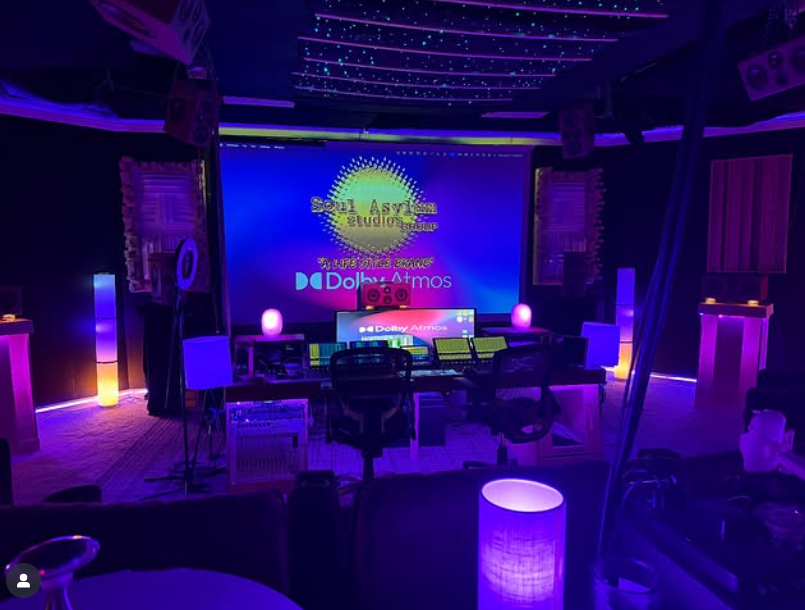Today, creating and delivering high-quality, immersive music is no longer a luxury but a necessity. Doesn’t matter whether you’re working on a film, TV show, podcast, or video game; audiences expect rich content. A multidimensional soundscape helps in drawing all or any of them into the story.
This is where Dolby Atmos enters the frame; it has totally changed the post-production workflow of the industry. Dolby Atmos allows you to place sounds in a three-dimensional space. It helps the sound designers, mixers, and editors to achieve unparalleled audio precision and creativity.
In this blog, we will discuss how Dolby Atmos music studio in Atlanta can enhance your post-production process and set your audio apart.
What is Dolby Atmos?
Dolby Atmos is the new, modern, and advanced audio technology that allows your sound to move freely around the listener in a 3D space. Unlike the traditional methods that used channel-based audio formats like the 5.1 and 7.1 stereo surround sound. Dolby Atmos uses object-based music structure that allows you to place your sound elements wherever you wish in a 3D space.
In short, instead of placing your music elements in specific horizontal channels. Now you can place them independently in any manner, and anywhere within a 3D sound space.

( Also Read More – Dolby Atmos Music Mastering )
Key Benefits Of Using Dolby Atmos In Post Production:
1. Creative Freedom In Sound Design:
With Dolby Atmos, you get the benefit of placing your music elements flexibly in a 3D sound environment dynamically. With Dolby Atmos, you can create sound effects that travel all around, above, and below your audience. For instance–
Do you want to create a scene involving a helicopter? Place the rotor sound effects realistically overhead of your audience, allowing them to enjoy a realistic experience.
The level of experimentation and creative control that Dolby Atmos studio Georgia provides inspires your innovation and storytelling through sound.
2. Enhanced Spatial Accuracy:
Dolby Atmos provides you with a new 3D sound space, where you can place your music elements however you wish. Now, you are no longer limited to horizontal speaker planes. The additional height and depth in the sound space allow your sound effects to exist in a truly three-dimensional space.
This spatial 3D accuracy helps you to replicate the natural environment more naturally and authentically where you can replicate from raindrops falling from above or distant thunder rolling across the sky.
3. Streamlined Workflow Across Platforms:
Dolby Atmos has the ability to smoothly integrate with popular DAWs (Digital Audio Workstations). For instance, Pro Tools, Nuendo, and Logic Pro. Dolby Atmos is compatible with a variety of formats and deliverables. That means you can now create a single Dolby Atmos mix and transform it to 5.1 or 7.1 versions of stereo. That too, without even creating separate mixes from scratch. Which in turn not only saves your time but also your effort.
( Read More – Dolby Atmos Music – Experience Music Like Never Before )
4. Future-Proofing Your Content:
Today, most of the cinemas, music streaming platforms, and consumer devices are adapting to Dolby Atmos. Dolby Atmos has become a widely used source, and delivering in this format ensures your content stays relevant.
As a musician, investing in Dolby Atmos Mixing now is a profitable step. You are not just aligning your music to the current but also future industry standards.
5. Improved Collaborations:
Dolby Atmos uses a whole new object-based music structure, unlike the traditional channels. The object-based music structure allows all the team members. That includes dialogue editors, effects designers, and music mixers to work independently on various sound elements.
This modern approach helps the team have better collaborations across different departments.
( Also Read More – Exact Steps to Making An Audiobook Recording )
How Dolby Atmos Improves Work Efficiency?
1. Simplified Revisions And Updates:
As we know, Dolby Atmos uses an object-based structure, which makes it quite easier to make changes to individual sound elements. You can freely adjust the position, level, or movement of any specific sound without even impacting other elements in the mix. Which in turn simplifies, and makes it easy for client revisions, and last-moment changes that are quite common in post post-production period.
2. Faster Rendering And Exporting:
The Dolby Atmos Production Suite and Renderer help in streamlining the process of exporting your mixes to different music formats. With Dolby Atmos, you can now derive stereo, 5.1, or binaural versions directly from the Atmos master files. Which in turn reduces the need for additional mixing sessions.
( Also Read About – How to Make a Dolby Atmos Version of My Song? )
3. Efficient Asset Management:
With Dolby Atmos, you can organize all the audio assets as objects with metadata. Which in turn makes it quite easier to manage large and complex sessions. Now, you can easily and quickly locate, modify, or automate all the individual elements. Hence, improving and enhancing the overall speed of your workflow.
4. Better Monitoring Capabilities:
Recording studios that are compatible with Dolby Atmos allow you to accurately hear how your music mix has been recorded. And how it will translate to other playback environments, whether it’s your home theatre, or just headphones.
Monitoring the spatial record in real-time ensures that there will be very few surprises and adjustments during final delivery.

Best Practices For Integrating Dolby Atmos In Post Production:
1. Investing In Dolby Atmos-Compatible Hardware:
Make sure your recording studio is well equipped with all the necessary things– speakers, interfaces, and monitoring tools. In order to get the whole of Dolby Atmos’ capability and benefit. Whether you’re working from a dolby atmos studio atlanta or any other professional facility, having the right equipment is crucial.
2. Plan Your Mix Early:
Make sure you have a plan, think about your spatial elements and object placement before the start of your project. Having a plan makes sure you have a benchmark, and it also prevents rework and maximizes the benefits of 3D sound.
3. Train Your Team:
It is very important for your sound team to understand your vision, all the technical aspects, and creative aspects of working with Atmos. There are many training resources and certification programs that are available; you can leverage them. Many Best music studios in Atlanta offer specialized training programs for Dolby Atmos workflows.
4. Use Templates And Presets:
Make sure you set up project templates in your DAWs that are perfectly optimized with Dolby Atmos. This, in turn, will ensure that your setup time is saved and ensure consistency across projects.
5. Test Across Systems:
Make sure you always check how your Dolby Atmos mix translates to different stereo and other formats. In order to make sure that your music mix sounds great on all devices. Dolby Atmos studio Georgia location can provide the ideal environment for comprehensive testing across multiple playback systems.
( Read More – Acoustical Design Considerations for Dolby Atmos Studios )
Conclusion:
Dolby Atmos is much more than how simple it sounds– it is a game-changer for the post-production workflow. By offering better creativity, control, improved spatial accuracy, and a streamlined process. Dolby Atmos enabled sound professionals to deliver world-class audio experiences efficiently. In this blog, we covered how by adopting this powerful tool, you can make sure that your stories are not just seen but heard by many. In an all three-dimensional glory space.
Whether you’re working from an Atlanta recording studio or any other professional facility. Implementing Dolby Atmos technology will elevate your audio production to new heights.

